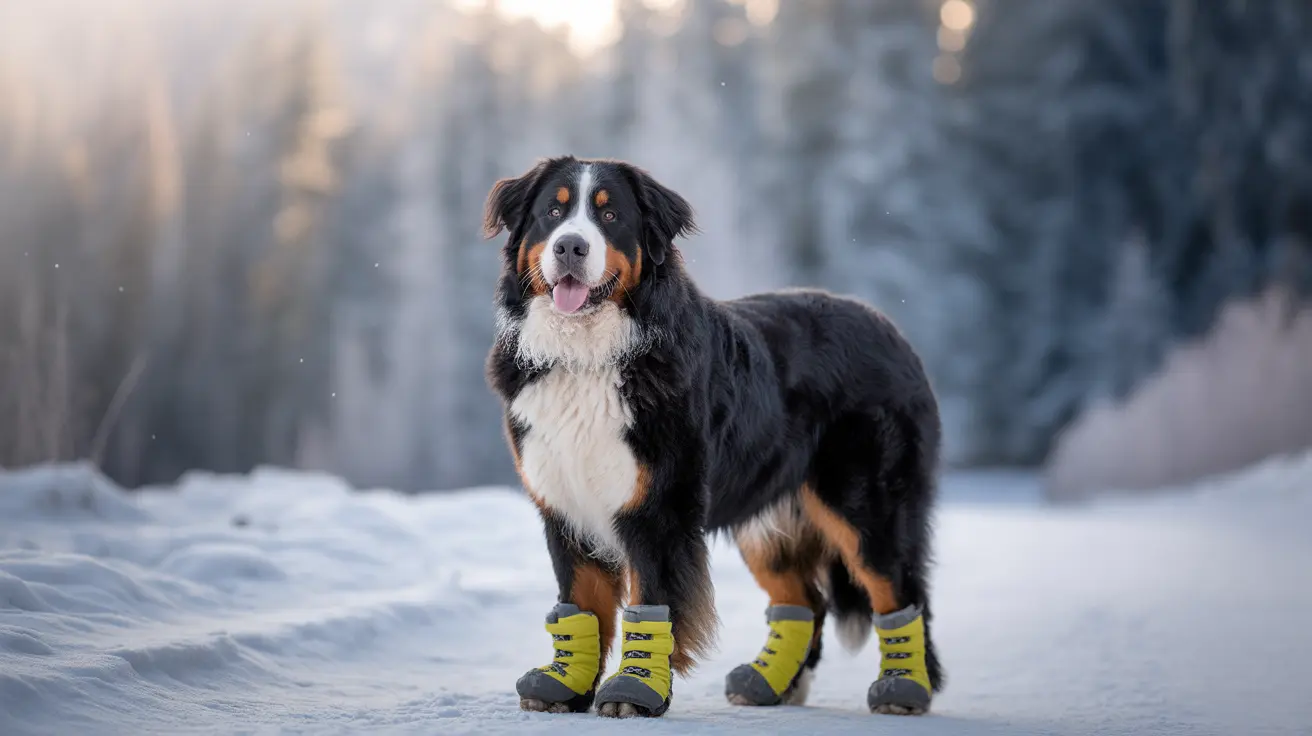As a dog owner, you may have noticed your furry friend's paws feeling unusually cold to the touch. This common observation often raises concerns about your pet's health and comfort. While cold paws can be perfectly normal in many situations, understanding when they signal a potential problem is crucial for your dog's wellbeing.
In this comprehensive guide, we'll explore the reasons behind cold dog paws, when to be concerned, and how to protect your canine companion's paw health in various weather conditions.
Understanding Normal Dog Paw Temperature
Dogs naturally maintain a body temperature between 100-102.5°F, but their paw temperature can vary significantly. Unlike humans, dogs have specialized paw pads containing blood vessels that help regulate their body temperature. These pads naturally feel cooler than the rest of their body due to:
- Direct contact with cold surfaces
- Less fur coverage compared to other body parts
- Natural temperature regulation through blood flow
- Presence of sweat glands in the paw pads
Common Causes of Cold Dog Paws
Environmental Factors
The most frequent reason for cold paws is environmental exposure. Walking on cold surfaces like snow, ice, or chilly pavement can quickly lower paw temperature. This is usually temporary and returns to normal once your dog moves to a warmer environment.
Circulation Changes
Dogs' bodies naturally reduce blood flow to their extremities in cold weather to conserve heat for vital organs. This biological response, known as vasoconstriction, can result in noticeably colder paws.
When Cold Paws Signal Health Concerns
Signs of Potential Problems
While cold paws are often normal, watch for these warning signs:
- Persistent coldness without environmental cause
- Discoloration of paw pads
- Lethargy or weakness
- Excessive shivering
- Difficulty walking or standing
Medical Conditions to Consider
Cold paws might indicate:
- Poor circulation
- Hypothermia
- Heart conditions
- Shock
- Frostbite in extreme cases
Protecting Your Dog's Paws
Winter Protection
Take these steps to keep your dog's paws safe in cold weather:
- Use dog boots for outdoor walks
- Apply paw balm or wax before exposure
- Limit time outdoors in extreme cold
- Wipe paws after walks to remove ice-melting chemicals
Regular Maintenance
Maintain healthy paw pads by:
- Checking regularly for cracks or injuries
- Trimming excess fur between pads
- Moisturizing with dog-specific products
- Keeping nails properly trimmed
Frequently Asked Questions
Why are my dog's paws cold even when they seem healthy and comfortable?
Cold paws are often normal, especially after contact with cold surfaces or during rest. If your dog is acting normally and shows no signs of distress, slightly cool paws usually aren't cause for concern.
When should I worry about my dog's cold paws indicating hypothermia or circulation problems?
Be concerned if cold paws are accompanied by lethargy, weakness, excessive shivering, or pale/bluish paw pads. These symptoms warrant immediate veterinary attention.
How can I protect my dog's paws from extreme cold and prevent frostbite?
Use protective boots, apply paw balm, limit outdoor exposure in extreme cold, and wipe paws after walks to remove ice-melting chemicals.
Do certain dog breeds or ages have colder paws naturally, and why?
Yes, smaller breeds, puppies, and senior dogs tend to have naturally colder paws due to less body mass and less efficient circulation. Arctic breeds often have better cold resistance.
What are the signs that cold paws in my dog require immediate veterinary attention?
Seek immediate veterinary care if cold paws are accompanied by lethargy, difficulty walking, pale or blue-tinted paws, excessive shivering, or any signs of frostbite.
Conclusion
While cold dog paws are often normal and temporary, understanding when they signal a problem is crucial for your pet's health. Monitor your dog's paw temperature alongside other symptoms, take appropriate protective measures in extreme weather, and don't hesitate to consult your veterinarian if you notice concerning changes.






